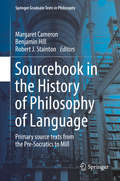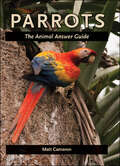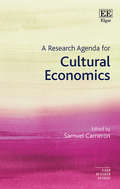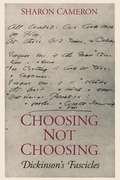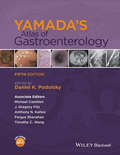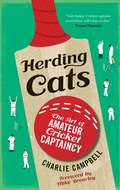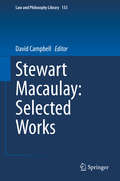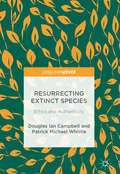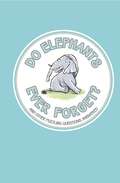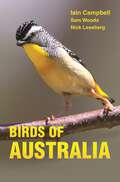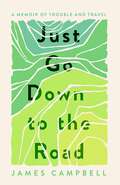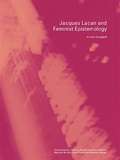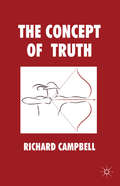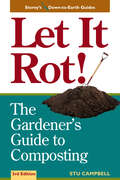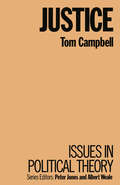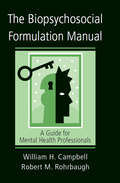- Table View
- List View
Sourcebook in the History of Philosophy of Language: Primary source texts from the Pre-Socratics to Mill (Springer Graduate Texts in Philosophy #2)
by Margaret Cameron Benjamin Hill Robert J. StaintonFor the first time in English, this anthology offers a comprehensive selection of primary sources in the history of philosophy of language. Beginning with a detailed introduction contextualizing the subject, the editors draw out recurring themes, including the origin of language, the role of nature and convention in fixing form and meaning, language acquisition, ideal languages, varieties of meanings, language as a tool, and the nexus of language and thought, linking them to representative texts. The handbook moves on to offer seminal contributions from philosophers ranging from the pre-Socratics up to John Stuart Mill, preceding each major historical section with its own introductory assessment. With all of the most relevant primary texts on the philosophy of language included, covering well over two millennia, this judicious, and generous, selection of source material will be an indispensable research tool for historians of philosophy, as well as for philosophers of language, in the twenty-first century. A vital tool for researchers and contemporary philosophers, it will be a touchstone for much further research, with coverage of a long and varied tradition that will benefit today’s scholars and enhance their awareness of earlier contributions to the field.
Parrots: The Animal Answer Guide (The Animal Answer Guides: Q&A for the Curious Naturalist)
by Matt CameronHave you ever wondered what parrots eat in the wild? Or why so many species live in the Amazon? How intelligent are parrots? What is the world’s rarest parrot? Parrots: The Animal Answer Guide provides detailed, factual answers to the ninety questions most on our minds. There are more than 350 species of these colorful callers, ranging in size from the diminutive lovebird to the massive macaw. Many species can live to be octogenarians in captivity—sometimes outliving their human caretakers by decades.The beautiful plumage of parrots and the ability to mimic sounds are both a blessing and a curse. A number of species are in danger of extinction because they are captured and sold into the pet trade by unscrupulous dealers. Fortunately, most parrot owners and retailers rely on captive breeding, although an appalling amount of wild collection continues. In addition to discussing parrot behavior and biology, Matt Cameron reveals the truth about the trade in wild parrots and explains what each of us can do to help save native populations. Whether you are a parrot owner, birder, ornithologist, or curious naturalist, you will find that Cameron asks and fully answers every question you have about these incredible birds.
Parrots: The Animal Answer Guide (The Animal Answer Guides: Q&A for the Curious Naturalist)
by Matt CameronHave you ever wondered what parrots eat in the wild? Or why so many species live in the Amazon? How intelligent are parrots? What is the world’s rarest parrot? Parrots: The Animal Answer Guide provides detailed, factual answers to the ninety questions most on our minds. There are more than 350 species of these colorful callers, ranging in size from the diminutive lovebird to the massive macaw. Many species can live to be octogenarians in captivity—sometimes outliving their human caretakers by decades.The beautiful plumage of parrots and the ability to mimic sounds are both a blessing and a curse. A number of species are in danger of extinction because they are captured and sold into the pet trade by unscrupulous dealers. Fortunately, most parrot owners and retailers rely on captive breeding, although an appalling amount of wild collection continues. In addition to discussing parrot behavior and biology, Matt Cameron reveals the truth about the trade in wild parrots and explains what each of us can do to help save native populations. Whether you are a parrot owner, birder, ornithologist, or curious naturalist, you will find that Cameron asks and fully answers every question you have about these incredible birds.
A Research Agenda for Cultural Economics (Elgar Research Agendas)
by Samuel CameronElgar Research Agendas outline the future of research in a given area. Leading scholars are given the space to explore their subject in provocative ways, and map out the potential directions of travel. They are relevant but also visionary. Providing a critical overview of cultural economics, this Research Agenda explores the current state of affairs in the field, suggesting methods of improvement for the coherency and progressiveness of future research. Situating work in this area in its historical context, Samuel Cameron draws together a range of international contributors to explore the development of cultural economics. Undertaking a thorough examination of matters of data quality, statistical methodology and the challenge of new developments in technology, chapters examine the different approaches to cultural economics. The book explores the myriad ways in which the topic has been neglected by mainstream economics, and examines reasons why it needs to be considered, evaluated and explored in more detail in our modern world. Current researchers in cultural economics, as well as cultural policies and leisure studies will find this book an invaluable read in exploring different ways to integrate cultural economics into mainstream studies. This Research Agenda will also be an invaluable aid for advanced students to create discussions suitable for essay topics and dissertations.
Choosing Not Choosing: Dickinson's Fascicles
by Sharon CameronAlthough Emily Dickinson copied and bound her poems into manuscript notebooks, in the century since her death her poems have been read as single lyrics with little or no regard for the context she created for them in her fascicles. Choosing Not Choosing is the first book-length consideration of the poems in their manuscript context. Sharon Cameron demonstrates that to read the poems with attention to their placement in the fascicles is to observe scenes and subjects unfolding between and among poems rather than to think of them as isolated riddles, enigmatic in both syntax and reference. Thus Choosing Not Choosing illustrates that the contextual sense of Dickinson is not the canonical sense of Dickinson. Considering the poems in the context of the fascicles, Cameron argues that an essential refusal of choice pervades all aspects of Dickinson's poetry. Because Dickinson never chose whether she wanted her poems read as single lyrics or in sequence (nor is it clear where any fascicle text ends, or even how, in context, a poem is bounded), "not choosing" is a textual issue; it is also a formal issue because Dickinson refused to chose among poetic variants; it is a thematic issue; and, finally, it is a philosophical one, since what is produced by "not choosing" is a radical indifference to difference. Extending the readings of Dickinson offered in her earlier book Lyric Time, Cameron continues to enlarge our understanding of the work of this singular American poet.
Yamada's Atlas of Gastroenterology
by Michael Camilleri J. Gregory Fitz Anthony N. Kalloo Fergus Shanahan Timothy C. WangAccess to accurate, high-quality images is vital for ensuring effective management of patients with GI complaints. The fifth edition of Yamada's Atlas of Gastroenterology sees the return of the gold-standard multi-media atlas that provides gastroenterologists with an outstanding visual tool covering all facets of the field. Every GI disorder from liver abscesses, endocrine neoplasms of the pancreas, to motility disorders of the esophagus are fully illustrated through the use of endoscopic ultrasonographs, computed tomography scans, magnetic resonance images, radionuclide images, and angiograms.
Yamada's Atlas of Gastroenterology
by Michael Camilleri J. Gregory Fitz Anthony N. Kalloo Fergus Shanahan Timothy C. WangAccess to accurate, high-quality images is vital for ensuring effective management of patients with GI complaints. The fifth edition of Yamada's Atlas of Gastroenterology sees the return of the gold-standard multi-media atlas that provides gastroenterologists with an outstanding visual tool covering all facets of the field. Every GI disorder from liver abscesses, endocrine neoplasms of the pancreas, to motility disorders of the esophagus are fully illustrated through the use of endoscopic ultrasonographs, computed tomography scans, magnetic resonance images, radionuclide images, and angiograms.
Persons, Identity, and Political Theory: A Defense of Rawlsian Political Identity
by Catherine Galko CampbellThis book examines the conception of the person at work in John Rawls’s writings from Theory of Justice to Justice as Fairness: A Restatement. The book aims to show that objections to Rawls’s political conception of the person fail and that a Rawlsian conception of political identity is defensible. The book shows that the debate between liberals and communitarians is relevant to the current debate regarding perfectionism and neutrality in politics, and clarifies the debate between Rawls and communitarians in a way that will promote fruitful discussion on the issue of political identity. It does this by providing a clearer account of a conception of personal identity according to which persons are socially constituted, including the intuitions and assumptions underlying the communitarians’ conception of persons as “socially constituted.” It examines the communitarian objections to liberal political theory and to the liberal conception of persons, the “unencumbered self.” The book differentiates between two types of objection to the liberal conception of persons: the metaphysical and normative. It explains Rawls's political conception of persons, and the metaphysical and normative commitments Rawls incurs—and does not incur—in virtue of that conception. It shows that both kind of objection to Rawls's political conception of the person fail. Finally, modifying Rawls’s political conception of the person, a Rawlsian conception of political identity is explained and defended.
Herding Cats: The Art of Amateur Cricket Captaincy
by Charlie CampbellIn 1985 Mike Brearley published The Art of Captaincy, revealing how he steered Middlesex and England to victory with his team of first-class cricketers. He got the absolute best out of his players, inspiring Ian Botham to new heights against the Australians in 1981. Few cricketers have had a greater impact on the amateur game than these two.Every captain would love Brearley's degree in people, as well as a hardhitting all-rounder like Botham. But theirs was a barely recognisable game from the one we play on often dishevelled grounds up and down the country with ragtag teams of ageing, deluded or hungover friends and acquaintances. Now, Charlie Campbell offers us a New Testament to Brearley's Old Testament, as he guides us through the realities of captaining an amateur team.Herding Cats picks its way through the minefield of an amateur's season: from the excitement and hope of pre-season nets, to the desperate scramble to gather 11 players for a frosty game on a far-flung, desolate pitch; from decoding the casual phrase 'I bat a bit', to setting a field of players who can't catch or throw; from handling the most delicate egos, to dealing with a case of the yips; from frequent moments of despair, to sudden and joyful glimpses of unexpected glory. For all those of us who recognise ourselves, our teammates, our friends and partners in the shambling joy of amateur cricket more than in the top-class international game, Campbell lights a path through a weekend world of play at the beating heart of the world's second most popular sport.
Stewart Macaulay: Selected Works (Law and Philosophy Library #133)
by David CampbellThis book represents a unique resource about Stewart Macaulay one of the common law world’s leading scholars of the law of contract and of the law in action approach to the study of law. Since 1959, he has published over 50 articles in leading journals, a number of working papers, (with colleagues at the University of Wisconsin Law School) a pathbreaking casebook for the teaching of the law of contract, and (with other colleagues) equally pathbreaking collections of materials for the teaching of the law in action or law in context approach to the study of law. In this work Macaulay has established himself as one of the postwar world’s leading scholars of the law of contract and of the sociology of law. His work is an absolute reference point in both disciplines, and it has attracted great attention elsewhere, most notably in economic sociology, where his concept of non-contractual economic relationships is regarded as an important theoretical innovation. Macaulay’s work has become an object of commentary in its own right, and the proposed book is intended to assist further such commentary by making hitherto difficult to obtain works readily accessible. Most of Macaulay’s work is now, when the leading journals are generally available in electronic form, readily accessible to students and researchers in universities. There are, however, a number of interesting and in most cases important works published in less accessible journals or works which were not published in an electronic form, which are difficult to obtain. This book will make them readily available, and in so doing will make it possible in future for scholars to have Macaulay’s complete oeuvre readily to hand. Although Macaulay’s work has provoked very considerable discussion, there previously have been no overall accounts of that work as opposed to critical engagements with aspects of it. In this book, two additional essays by leading commentators give accounts of Macaulay’s work and provide an introduction to, exegesis of and general evaluation of Macaulay’s work as a whole which is not to be found in the existing literature.
Research Handbook on Remedies in Private Law (Research Handbooks in Private and Commercial Law series)
by David Campbell Roger HalsonThe purpose and doctrinal structure of private law remedies has undergone fundamental questioning over the last 25 years. This Research Handbook comprehensively and authoritatively reviews the contemporary challenges in research regarding remedies in private law. The Research Handbook on Remedies in Private Law focuses on the most important issues throughout contract, equity, restitution and tort law as they have arisen in the major common law jurisdictions, touching upon those of other jurisdictions where pertinent. Leading contributors from across the globe thoroughly analyse the steps taken to improve the clarity and functioning of the law and examine additions to the law’s difficulties. Providing a uniquely in-depth engagement with the doctrine and theory of the topic, this Research Handbook will be of great interest to academics and students working and studying contract, equity, restitution or tort law, as well as practising lawyers in the field.
Resurrecting Extinct Species: Ethics and Authenticity
by Douglas Ian Campbell Patrick Michael WhittleThis book is about the philosophy of de-extinction. To make an extinct species ‘de-extinct’ is to resurrect it by creating new organisms of the same, or similar, appearance and genetics. The book describes current attempts to resurrect three species, the aurochs, woolly mammoth and passenger pigeon. It then investigates two major philosophical questions such projects throw up. These are the Authenticity Question—‘will the products of de-extinction be authentic members of the original species?’—and the Ethical Question—‘is de-extinction something that should be done?' The book surveys and critically evaluates a raft of arguments for and against the authenticity or de-extinct organisms, and for and against the ethical legitimacy of de-extinction. It concludes, first, that authentic de-extinctions are actually possible, and second, that de-extinction can potentially be ethically legitimate, especially when deployed as part of a ‘freeze now and resurrect later’ conservation strategy.
Resurrecting Extinct Species: Ethics and Authenticity
by Douglas Ian Campbell Patrick Michael WhittleThis book is about the philosophy of de-extinction. To make an extinct species ‘de-extinct’ is to resurrect it by creating new organisms of the same, or similar, appearance and genetics. The book describes current attempts to resurrect three species, the aurochs, woolly mammoth and passenger pigeon. It then investigates two major philosophical questions such projects throw up. These are the Authenticity Question—‘will the products of de-extinction be authentic members of the original species?’—and the Ethical Question—‘is de-extinction something that should be done?' The book surveys and critically evaluates a raft of arguments for and against the authenticity or de-extinct organisms, and for and against the ethical legitimacy of de-extinction. It concludes, first, that authentic de-extinctions are actually possible, and second, that de-extinction can potentially be ethically legitimate, especially when deployed as part of a ‘freeze now and resurrect later’ conservation strategy.
Do Elephants Ever Forget?: And Other Puzzling Questions Answered
by Guy CampbellDo Elephant's Ever Forget contains over fifty of the most important questions kids have ever asked (and a couple of quite silly ones, too). From 'what would happen if a meteorite hit the Earth?' and 'how deep will the oceans be if the ice caps melt?' to ' would my eyeballs pop out if I sneezed with my eyes open?' and 'why can't I tickle myself?'
Birds of Australia: A Photographic Guide
by Iain Campbell Sam Woods Nick Leseberg Geoff JonesAustralia is home to a spectacular diversity of birdlife, from parrots and penguins to emus and vibrant passerines. Birds of Australia covers all 714 species of resident birds and regularly occurring migrants and features more than 1,100 stunning color photographs, including many photos of subspecies and plumage variations never before seen in a field guide. Detailed facing-page species accounts describe key identification features such as size, plumage, distribution, behavior, and voice. This one-of-a-kind guide also provides extensive habitat descriptions with a large number of accompanying photos. The text relies on the very latest IOC taxonomy and the distribution maps incorporate the most current mapping data, making this the most up-to-date guide to Australian birds.Covers all 714 species of resident birds and regularly occurring migrantsFeatures more than 1,100 stunning color photosIncludes facing-page species accounts, habitat descriptions, and distribution mapsThe ideal photographic guide for beginners and seasoned birders alike
Birds of Australia: A Photographic Guide (PDF)
by Iain Campbell Sam Woods Nick Leseberg Geoff JonesAustralia is home to a spectacular diversity of birdlife, from parrots and penguins to emus and vibrant passerines. Birds of Australia covers all 714 species of resident birds and regularly occurring migrants and features more than 1,100 stunning color photographs, including many photos of subspecies and plumage variations never before seen in a field guide. Detailed facing-page species accounts describe key identification features such as size, plumage, distribution, behavior, and voice. This one-of-a-kind guide also provides extensive habitat descriptions with a large number of accompanying photos. The text relies on the very latest IOC taxonomy and the distribution maps incorporate the most current mapping data, making this the most up-to-date guide to Australian birds.Covers all 714 species of resident birds and regularly occurring migrantsFeatures more than 1,100 stunning color photosIncludes facing-page species accounts, habitat descriptions, and distribution mapsThe ideal photographic guide for beginners and seasoned birders alike
Just Go Down to the Road: A Memoir of Trouble and Travel
by James Campbell'An enthralling and compulsively readable memoir: James Campbell is a marvelously charming teller of his improbable progress from high school dropout to literary critic and intellectual. There is no resisting the humour and modesty, the humanity and tenderness of his vivid account' - Phillip Lopate, author of To Show and to Tell: The Craft of Literary Nonfiction'So here I am to say what for many years I have wanted to say: that not only did I admire your book on James Baldwin extravagantly when I read it upon publication, it is one of those books that have remained alive in my heart and mind ever since . . . and you know how rare that is!' - Vivian Gornick, author of Unfinished Business: Notes of a Chronic Re-Reader'Baldwin's best biographer' - New York Times Book Review'When I first met Baldwin, he referred me to James Campbell as the man to talk to if I wished to know more about his life and work' - Caryl PhillipsThe story begins with Campbell, aged 14, in a police cell in Glasgow. He’s been charged with stealing books – five Mickey Spillane novels and a copy of Peyton Place. At 15, he became an apprentice printer, but gave that up in order to ‘go on the road’, fulfilling the only ambition he ever had while a pupil at King’s Park Secondary School in Glasgow – to be what RLS called ‘a bit of a vagabond’.On his hitchhiking journeys through Asia and North Africa, an interest in music, reading and writing grew. Campbell also took a keen interest in learning from interesting people. In 1972 he worked on a kibbutz, living in the neighbouring cabin to Peter Green, the founder and lead guitarist of Fleetwood Mac, with whom he formed a two-man musical combo. At the same time, he was part of a group of aspiring writers in Glasgow, including Tom Leonard. His literary heroes of the time were Alexander Trocchi and John Fowles: Campbell tracked them down to their homes and wrote extensively about both. The stories Campbell are recounted in this book.A crowning moment of his life was forming a friendship with the American writer James Baldwin. Campbell visited him more than once at his home in the South of France, and persuaded him to come to Edinburgh for the Book Festival in 1985. Campbell later wrote the acclaimed biography of Baldwin, Talking at the Gates.
Jacques Lacan and Feminist Epistemology (Transformations)
by Kirsten CampbellThis book outlines a compelling new agenda for feminist theories of identity and social relations. Using Lacanian psychoanalysis with feminist epistemology, the author sets out a groundbreaking psychoanalytic social theory. Campbell's work offers answers to the important contemporary question of how feminism can change the formation of gendered subjectivities and social relations. Drawing on the work of third wave feminists, the book shows how feminism can provide new political models of knowing and disrupt foundational ideas of sexual identity.Kirsten Campbell engages the reader with an original intepretation of Lacanian psychoanalysis and offers a compelling argument for a fresh commitment to the politics of feminism. Jacques Lacan and Feminist Epistemology will be essential reading for anyone with interests in gender studies, cultural studies, psychoanalytic studies or social and political theory.
Jacques Lacan and Feminist Epistemology (Transformations)
by Kirsten CampbellThis book outlines a compelling new agenda for feminist theories of identity and social relations. Using Lacanian psychoanalysis with feminist epistemology, the author sets out a groundbreaking psychoanalytic social theory. Campbell's work offers answers to the important contemporary question of how feminism can change the formation of gendered subjectivities and social relations. Drawing on the work of third wave feminists, the book shows how feminism can provide new political models of knowing and disrupt foundational ideas of sexual identity.Kirsten Campbell engages the reader with an original intepretation of Lacanian psychoanalysis and offers a compelling argument for a fresh commitment to the politics of feminism. Jacques Lacan and Feminist Epistemology will be essential reading for anyone with interests in gender studies, cultural studies, psychoanalytic studies or social and political theory.
The Pivot: The Future of American Statecraft in Asia
by Kurt CampbellFrom former assistant secretary of state Kurt M. Campbell comes the definitive analysis and explanation of the new major shift in American foreign policy, its interests and assets, to Asia. There is a quiet drama playing out in American foreign policy far from the dark contours of upheaval in the Middle East and South Asia and the hovering drone attacks of the war on terror. The United States is in the midst of a substantial and long-term national project, which is proceeding in fits and starts, to reorient its foreign policy to the East. The central tenet of this policy shift, aka the Pivot, is that the United States will need to do more with and in the Asia-Pacific hemisphere to help revitalize its own economy, to realize the full potential of the region's dramatic innovation, and to keep the peace in the world's most dynamic region where the lion's share of the history of the twenty-first century will be written. This book is about a necessary course correction for American diplomacy, commercial engagement, and military innovation during a time of unrelenting and largely unrewarding conflict. While the United States has intensified its focus on the Asia-Pacific arena relative to previous administrations, much more remains to be done. The Pivot is about that future. It explores how the United States should construct a strategy that will position it to maneuver across the East and offers a clarion call for cunning, dexterity, and ingenuity in the period ahead for American statecraft in the Asia-Pacific region.
The Concept of Truth
by R. CampbellThis book addresses the contemporary disillusion with truth, manifest in sceptical relativism. Contending that all contemporary theories of truth are too narrow, it argues for a novel conception of truth, by showing how error is implicated in the actions of all living things; and by analyzing uses of 'true' in non-linguistic contexts.
Let it Rot!: The Gardener's Guide to Composting (Third Edition)
by Stu CampbellStu Campbell provides an in-depth explanation of how composting works and offers clear instructions for a variety of both traditional and modern methods for successfully creating your own compost.
The Biopsychosocial Formulation Manual: A Guide for Mental Health Professionals
by William H. Campbell Robert M. RohrbaughBased on George Engel’s model, The Biopsychosocial Formulation Manual presents ways to help psychiatry residents and students effectively gather and organize patient data to arrive at a complete mental health history in a limited timeframe. While most current models only take one factor into account, Campbell and Rohrbaugh emphasize and analyze three essential components (biological, social, and psychological). The process of identifying pertinent data for each component of the biopsychosocial formulation is explicated in detail. A separate section outlines how to use the biopsychosocial formulation to generate treatment recommendations. This volume includes a complete package for practicing the biopsychosocial method; this easy-to-use guide includes a data record sheet and a companion CD to facilitate organization and assessment, appealing to both the psychiatric professional and the trainee.
